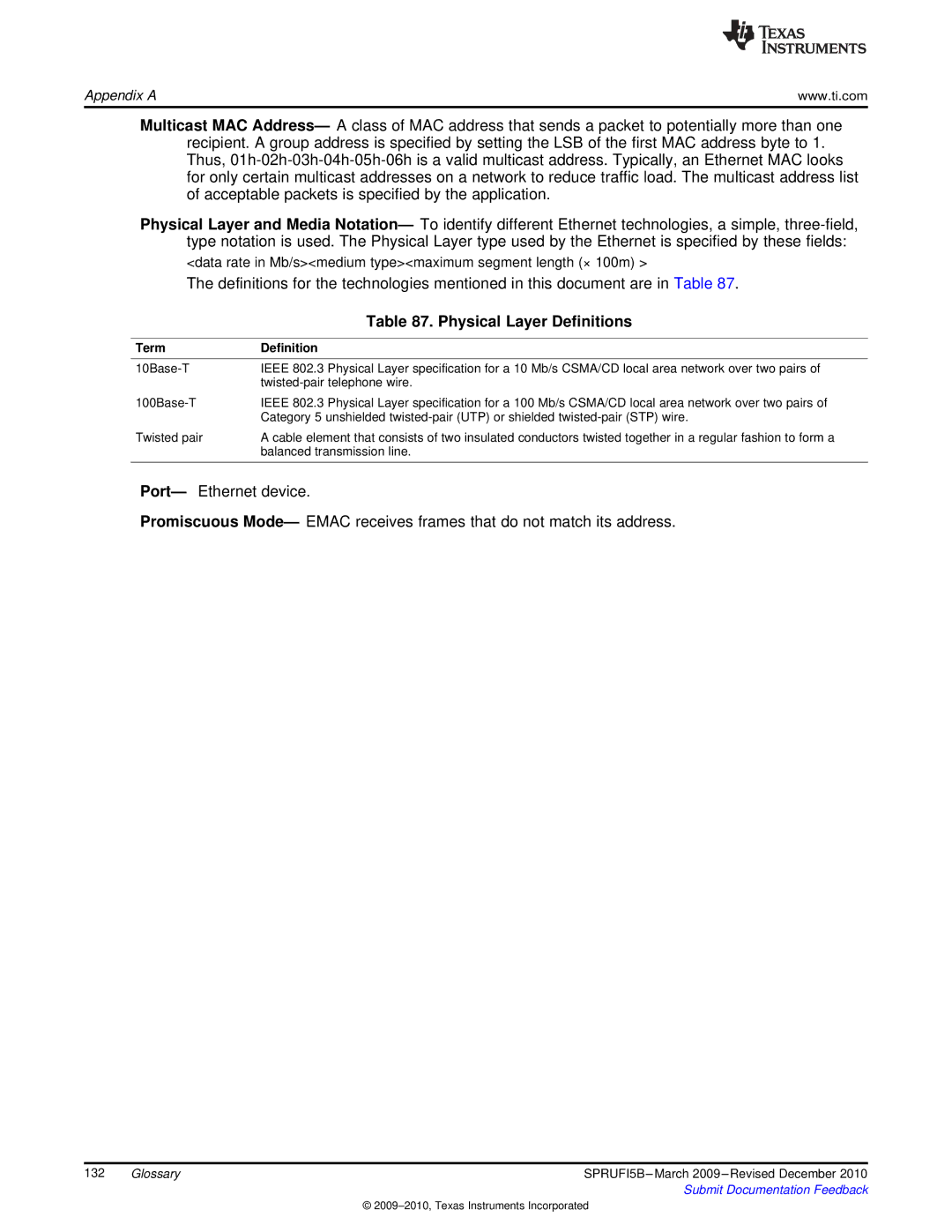
Appendix A | www.ti.com |
Multicast MAC Address— A class of MAC address that sends a packet to potentially more than one recipient. A group address is specified by setting the LSB of the first MAC address byte to 1. Thus,
Physical Layer and Media Notation— To identify different Ethernet technologies, a simple,
<data rate in Mb/s><medium type><maximum segment length (× 100m) >
The definitions for the technologies mentioned in this document are in Table 87.
| Table 87. Physical Layer Definitions |
|
|
Term | Definition |
|
|
IEEE 802.3 Physical Layer specification for a 10 Mb/s CSMA/CD local area network over two pairs of | |
| |
IEEE 802.3 Physical Layer specification for a 100 Mb/s CSMA/CD local area network over two pairs of | |
| Category 5 unshielded |
Twisted pair | A cable element that consists of two insulated conductors twisted together in a regular fashion to form a |
| balanced transmission line. |
|
|
Port— Ethernet device.
Promiscuous Mode— EMAC receives frames that do not match its address.
132 | Glossary | SPRUFI5B |
|
| Submit Documentation Feedback |
©
